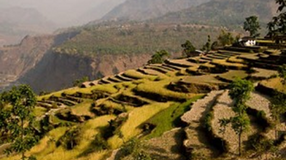Market Opportunity to Nepal
- cjenkins1
- Dec 2, 2016
- 2 min read
There are many uses and applications of tree products in Nepal, and the Nepalese heavily rely on forest products for their livelihood (Paudel, 2003). Households in Nepal are forest dependent with more than 80% of Nepal’s energy source provided by wood (Thoms, 2008). Importing sugar maple saplings for planting in the hill regions of Nepal to start a community forestry group is a great opportunity for Nepal. The sugar maple saplings would be ideal for selling to community forest users. The seedlings will be more affordable when splitting the costs among the group instead of one grower. The trees can provide an income for the Nepalese women involved in the community forest groups along with the poor (Government of Nepal, 2016). The community forest users can sell the excess timber and other forest products not used by their family to have more income for things like farm improvements (Thoms, 2008).
A special attribute associated with sugar maples is the production of sweet sap. After about ten years of growth, the trees with at least a six inch trunk diameter will be large enough to harvest sap for processing (Davenport and Staats, 1998). Unlike other tree species, sugar maples will be able to generate income in a shorter time period than trees planted for timber alone (Treeplantation.com, 2000). In Canada, $14 500 to $28 500 per acre in the 30th year of production, is earned as gross revenue through the sale of maple syrup (Treeplantation.com, 2000). This gross revenue per acre continues to rise as the years of production continue (Treeplantation.com, 2000). The Nepalese could process maple sap into syrup and get a premium price for their product like Canada.
http://www.nepalmountainnews.com/cms/about-nepal/geography





Comments